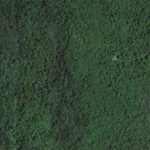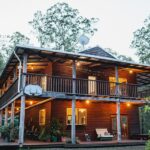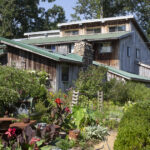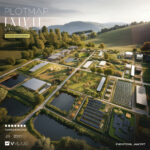As urban landscapes continue to expand, the natural habitats of wildlife shrink, forcing animals to adapt to city environments. However, instead of seeing wildlife as a nuisance, we can embrace a more eco-friendly approach by designing urban spaces that support biodiversity. Implementing Urban Wildlife Management Plans for homes, apartments, and city landscapes helps foster harmony between people and nature. Small changes can make a significant impact, ensuring a healthier ecosystem for future generations.
Why Urban Wildlife Management Matters
Many species, including birds, pollinators, and small mammals, struggle to survive in urban settings due to habitat destruction, pollution, and human-wildlife conflicts. Thoughtful urban planning can mitigate these effects while offering numerous benefits:
- Biodiversity Preservation: Maintaining diverse species keeps ecosystems stable.
- Natural Pest Control: Birds, bats, and beneficial insects help control mosquito and pest populations.
- Mental and Physical Health: Access to green spaces and wildlife enhances well-being.
- Educational Opportunities: Children can learn about conservation through direct experiences with nature.
Key Elements of an Urban Wildlife Management Plan
1. Native Landscaping for Urban Areas
One of the easiest ways to support wildlife is by using native plants that provide food and shelter. Unlike exotic species, native plants are adapted to the local climate and require less water and maintenance.
How to Start:
- Use online resources like the Native Plant Finder to select suitable plants for your area.
- Consider adding butterfly gardens, bee-friendly flowers, and shrubs that attract birds.
- Replace conventional lawns with wildflower meadows or clover patches to promote biodiversity.
2. Creating Small Habitats at Home
Even in small spaces, simple adjustments can make a difference:
- Install Birdhouses and Feeders: Provide shelter for cavity-nesting birds like chickadees and wrens. Check out TreeHugger’s Guide for DIY birdhouse instructions.
- Plant a Pollinator Garden: Support bees and butterflies by planting milkweed, lavender, and other nectar-rich flowers. See the Pollinator Partnership for region-specific planting guides.
- Create a Mini-Pond: Even a small water feature can provide hydration for birds, frogs, and beneficial insects.
3. Wildlife-Friendly Building Design
- Rooftop Gardens & Green Roofs: Convert rooftops into thriving ecosystems. Check out Green Roofs for Healthy Cities for inspiration.
- Bird-Safe Windows: Prevent collisions with special decals or patterned glass. Visit American Bird Conservancy for solutions.
- Light Pollution Reduction: Use downward-facing lights with warm hues to minimize disturbance to nocturnal species.
4. Sustainable Pest Control Methods
Using chemical pesticides can disrupt ecosystems and harm beneficial insects. Instead, opt for:
- Bat Houses (Bats consume thousands of mosquitoes per night—learn to build one here).
- Ladybugs & Praying Mantises for natural aphid control.
- Physical Barriers like row covers to protect gardens without chemicals.
5. Water Conservation & Runoff Management
Urban areas generate excessive runoff, polluting waterways. Sustainable solutions include:
- Rain Gardens: Plant depressions that absorb rainwater and prevent flooding (DIY Guide).
- Permeable Pavements: Reduce water runoff with eco-friendly materials like gravel or grass pavers.
- Rainwater Harvesting: Collect rainwater for garden irrigation using simple rain barrel systems.
Fun Family Projects to Get Involved
1. Build a DIY Bug Hotel
Insects play a crucial role in maintaining a balanced ecosystem. A bug hotel provides shelter for pollinators like bees and ladybugs.
- Gather bamboo, wood scraps, pinecones, and hollow stems.
- Stack materials in a wooden frame and place it in a sheltered garden spot.
- Learn more from the National Wildlife Federation.
2. Create a Butterfly Puddling Station
Butterflies need minerals and water, which they obtain from muddy puddles.
- Fill a shallow dish with sand and small rocks.
- Add water to keep it moist, and place it in a sunny area near flowers.
- More details at Monarch Joint Venture.
3. Make a Squirrel & Bird Feeder
- Reuse old wood, pinecones, or recycled bottles to create feeders.
- Hang them in trees to encourage wildlife visits.
- Learn more at Feederwatch.org.
The Bigger Picture: How Small Actions Add Up
Every effort to incorporate urban wildlife-friendly practices contributes to a larger movement of sustainable living and environmental stewardship. Whether through individual action or community-wide initiatives, promoting biodiversity ensures a more resilient future for both people and nature.
Creating urban spaces that respect and nurture wildlife isn’t just beneficial—it’s necessary. As urbanization expands, embracing eco-friendly solutions ensures that nature can still thrive alongside us. Through native landscaping, wildlife-friendly infrastructure, sustainable pest control, and small DIY projects, we can make a meaningful difference. Get involved today and take the first step toward a greener, more balanced urban future.





